Japandi style is the perfect marriage of Japanese minimalism and Scandinavian functionality.
This hybrid aesthetic combines the clean lines and subtle neutrals of Scandinavia with the tranquil simplicity of Japan.
The Japandi living room embodies wabi-sabi – the acceptance of transience and imperfection.
The goal is to create a soothing, clutter-free space that promotes mindfulness.
✨Click to Get My 101 FREE Designer Room Ideas
Minimalist Neutrals

This airy, all-white living room is a pristine example of Japandi minimalism.
The lack of clutter and color creates a sense of openness and lightness.
To keep the space from feeling too stark, natural textures add subtle visual interest.
The woven rattan pendant lamp, jute rug, linen sofa and nubby throw blanket soften the solid white backdrop.
Greenery is used sparingly as accents, with just a few potted plants keeping the room grounded in nature.
This pared-down palette lets the architectural details shine, from the exposed wood beams to the large windows ushering in natural light.
If an all-white scheme feels too austere, add in light natural wood and neutral earth tones like beige, tan and soft gray.
The goal is to create a soothing, distraction-free space.
Modern Wood Paneling

Wood paneling evokes a sense of warmth and harmony with nature – an essential Japandi principle.
This living room uses wide planks of light-toned wood to soften the modern architecture.
The straight lines of the wood slats also echo the clean geometrics of the furniture and windows.
Notice how wood is used judiciously as an accent wall rather than overwhelming the space.
The rest of the walls remain white to keep the room feeling light and spacious.
Potted bamboo reinforces the organic ambiance, while the woven bench and rattan pendant add texture.
Japandi style encourages natural materials like wood, stone, rattan, bamboo and jute.
Use them strategically to imbue your space with an earthy, grounded energy.
Integrated Greenery
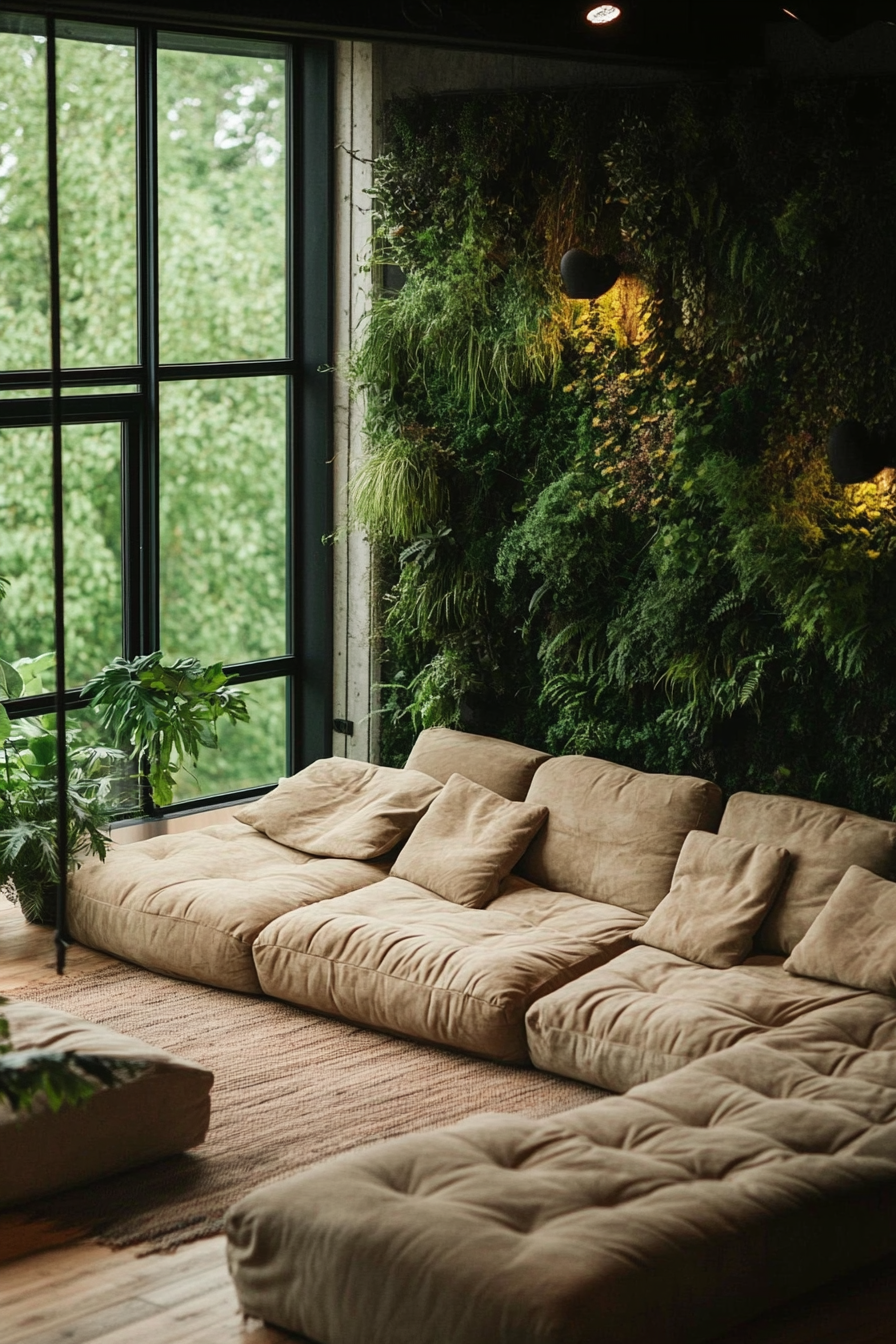
Incorporating living greenery is an easy way to inject Japandi serenity into your space.
The simple addition of these potted bamboos transforms the corner of this living room into a mini indoor garden.
Notice how the pots are elevated at varying heights to create an organic cluster.
The bamboos’ tall, slender shapes contrast beautifully with the cube shelves and geometric artwork.
While Japandi style embraces minimalism, it avoids starkness by bringing in elements from the natural world.
If a living wall or hanging planters aren’t options for your space, incorporate cut greens like eucalyptus or dried botanicals to infuse your living room with an earthy Zen aura.
Cozy Minimalism
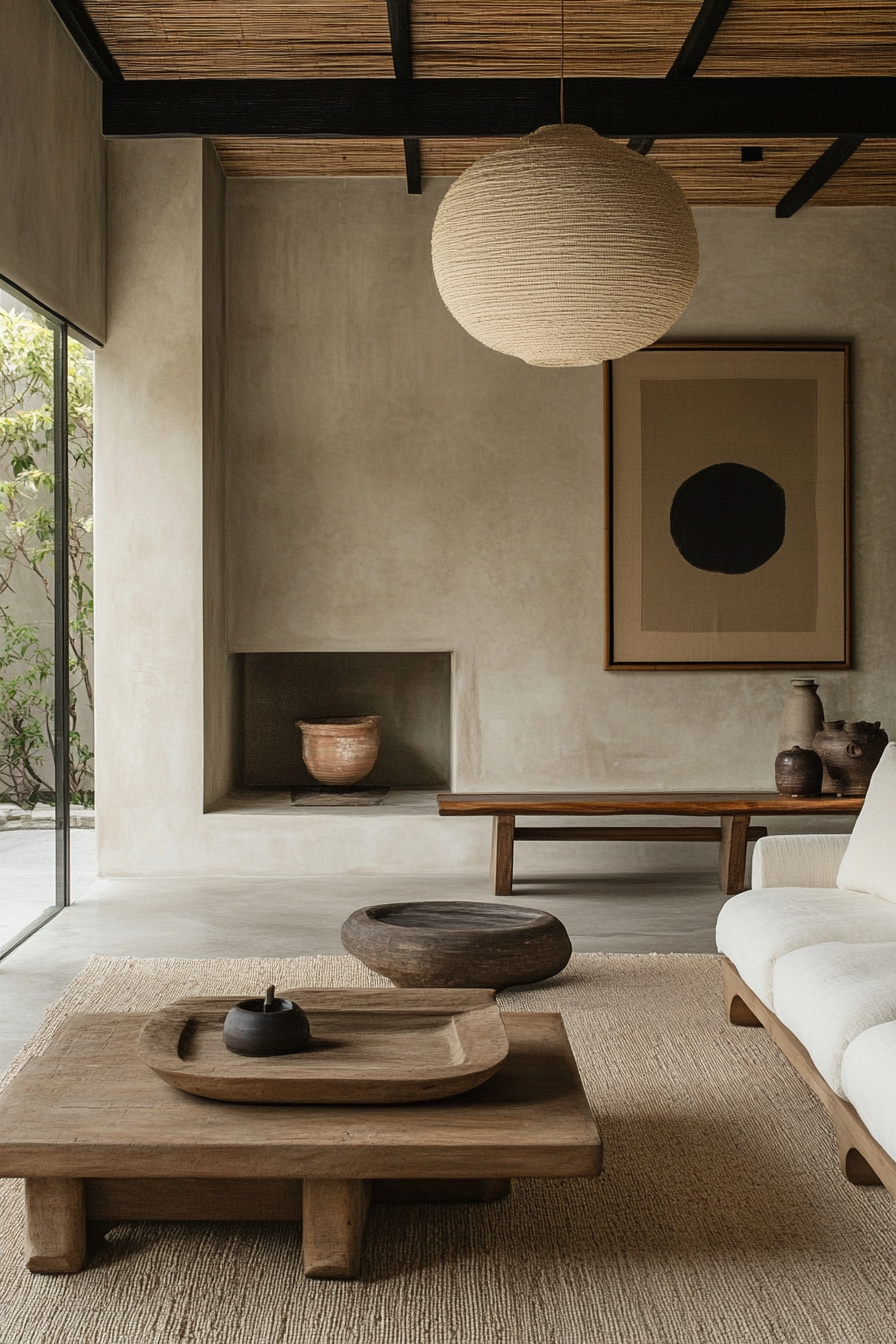
This Japandi living room nails the balance between minimalism and comfort.
At first glance, the space appears very pared-down.
Crisp white walls, light wood flooring and just a few furnishings establish an airy simplicity.
But notice the soft textures and natural materials that keep things cozy.
The woven wool rug and linen sofa pairing is classic Japandi.
So is the warm wood coffee table and rattan pendant light.
Curling up under the fluffy throw blanket feels indulgent against the neutral backdrop.
Remember, the Japandi look is minimal but not sterile.
Make sure to incorporate tactile textures and throw in a few curvy shapes to soften all the straight lines.
The goal is restrained but welcoming comfort.
✨Click to Get My 101 FREE Designer Room Ideas
Statement Columns

If you have the architectural elements, flaunt them!
The bold black pillars in this space provide dramatic contrast to the white minimalist scheme.
The columns’ organic shape brings motion and curves into the otherwise rigid space.
Notice how they frame and define different functional areas of the open concept living room.
The pillars also draw the eye upwards to appreciate the high ceilings.
While many Japandi rooms embrace light and neutral tones, don’t be afraid to incorporate contrast.
The yin-yang dynamic of light and dark creates visual interest.
Just be sure to keep furnishings and accessories pared-down so bold architectural features can shine.
Rattan Accent Wall
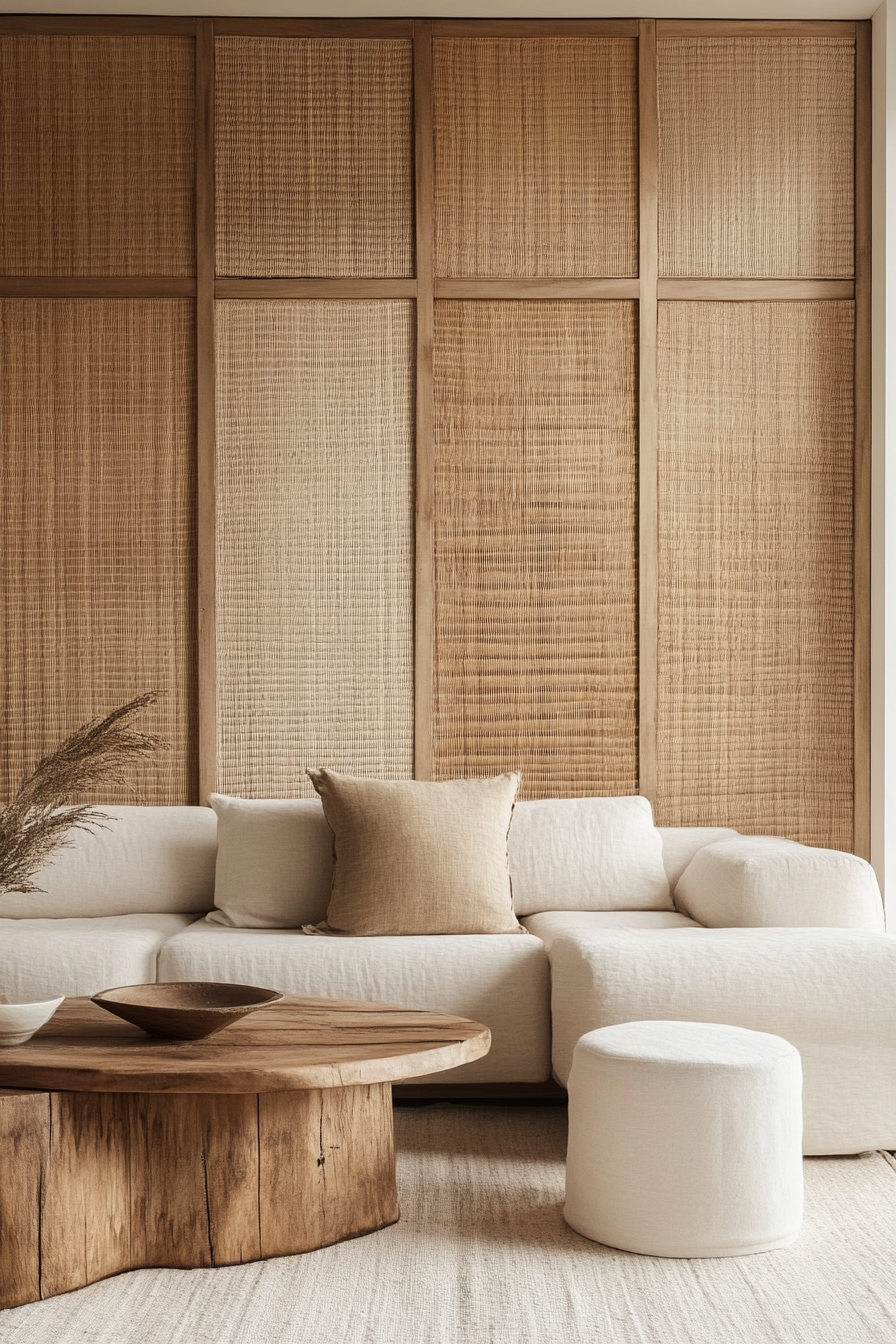
Natural woven rattan makes for an earthy accent wall that enhances a Japandi space without overpowering it.
Here it adds warmth and texture as a focal point behind the sitting area.
Notice how the neutral color allows the wallcovering to blend in instead of dominate.
The woven texture and organic shape provide just enough visual interest without feeling distracting or busy.
Rattan is having a major moment right now and it’s the perfect way to inject naturalness into your Japandi living room.
Look for ready-made panels or have it custom installed.
Japanese-Inspired Seating

In Japandi style, seating should appear low to the ground to create a tranquil, earthy seating area.
Japanese-style tansu step stools allow you to arrange compact seating while keeping furniture raised.
Using multiple low cushions encourages relaxation similar to sitting on tatami mats.
The surrounding plants make this seating nook feel sheltered and serene.
To complete the look, hang a bamboo shade over the window.
If traditional Japanese décor feels too ornate for your taste, stick to muted solid cushions instead of floral prints.
Focus on natural textures like linen, seagrass and jute.
This inviting little nook would be a perfect calm reading spot tucked into the corner of an airy living room.
Layered Pendant Lights
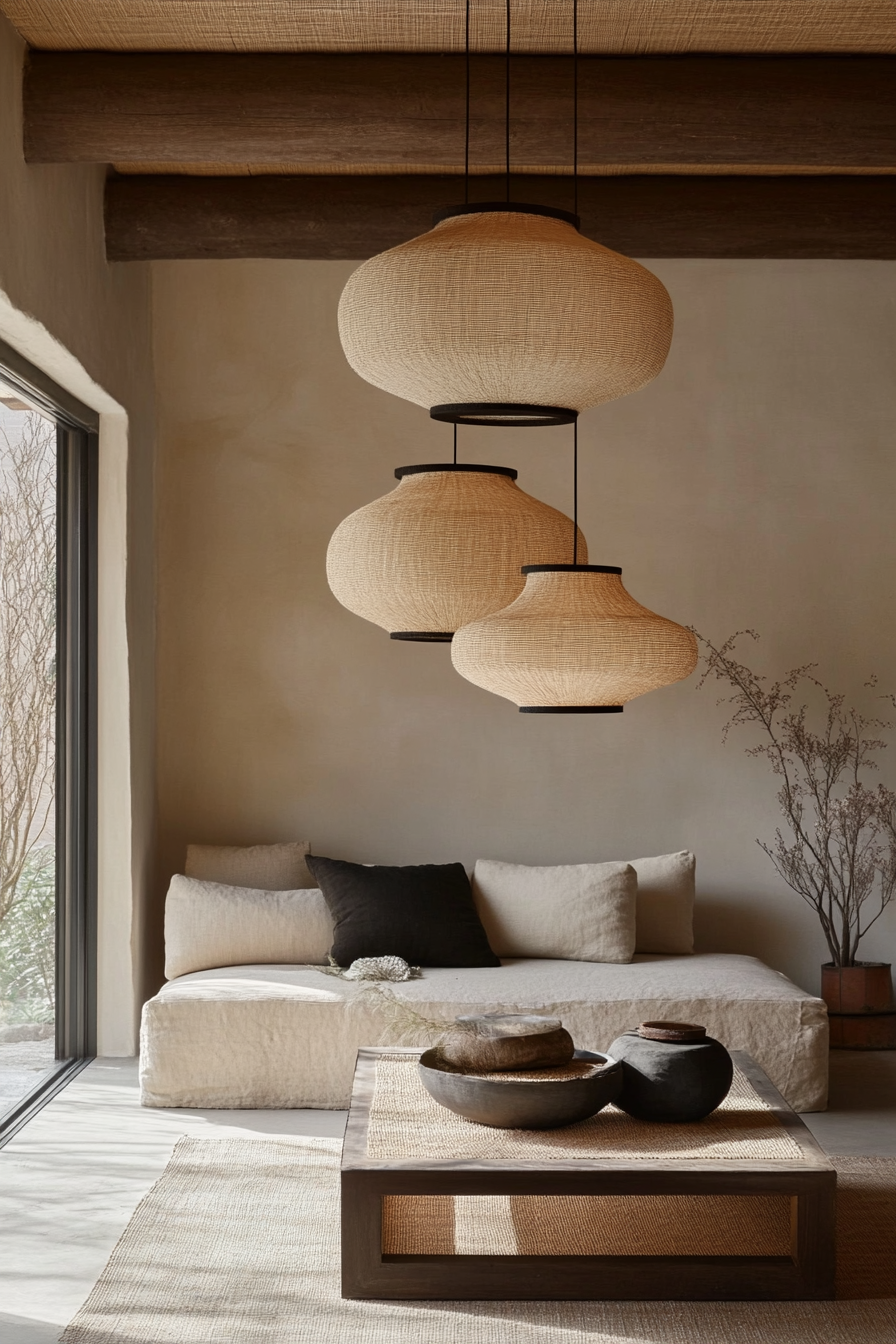

Lighting can make or break a serene aesthetic.
Avoid harsh overheads and instead opt for layered ambient lighting.
This living room uses three pendant lights clustered at varying heights to create a cozy glow.
The rattan, bamboo and linen textures give off an organic vibe even though the shapes remain simple.
When it comes to Japandi style, opt for natural materials over ornate ornamentation.
Instead of a rigidly linear layout, try staggering and clustering lamps for casual interest.
With restrained furniture and neutral tones, lighting takes on even more importance in setting the mood.
The goal is to bathe each Japandi space in a warm, inviting radiance.
✨Click to Get My 101 FREE Designer Room Ideas
Textured Neutrals
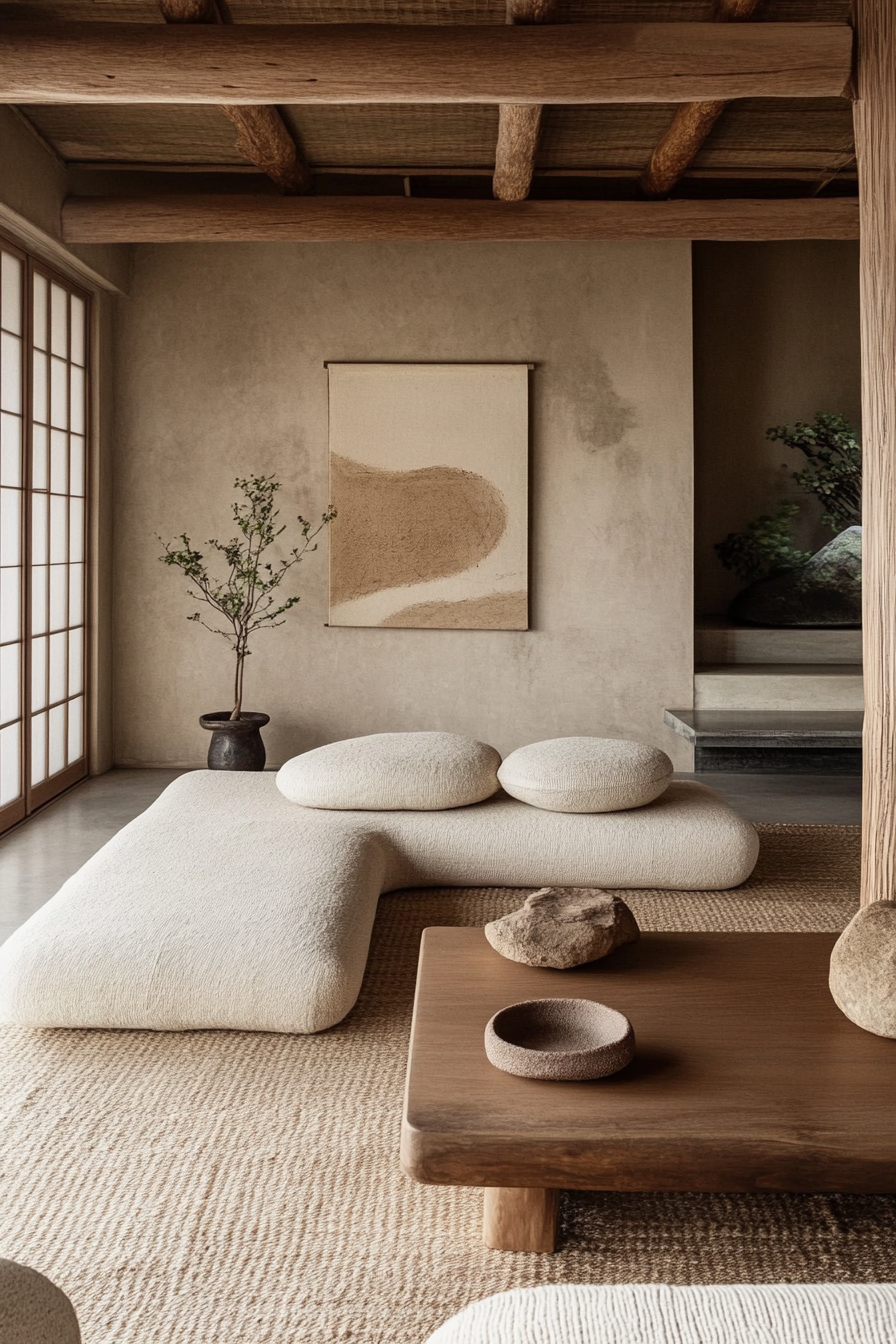
Natural textures add visual depth and keep a neutral Japandi palette from becoming one-note.
In this soothing space, woven lampshades provide contrast to the smooth walls and sleek cabinetry.
The light wood flooring has an organic grain that grounds the room.
A fluffy sheepskin rug and nubby linen sofa add more cozy tactile elements.
Notice how color is applied sparingly to accent furnishings like the rustic leather pouf, warm wood side table and vivid green drinks trolley.
Neutral textiles combined with occasional bright pops give you permission to play with bolder colors without overwhelming the Zen vibe.
Just be sure to stick with natural materials that impart Japandi’s signature earthy charm.
Indoor Greenery
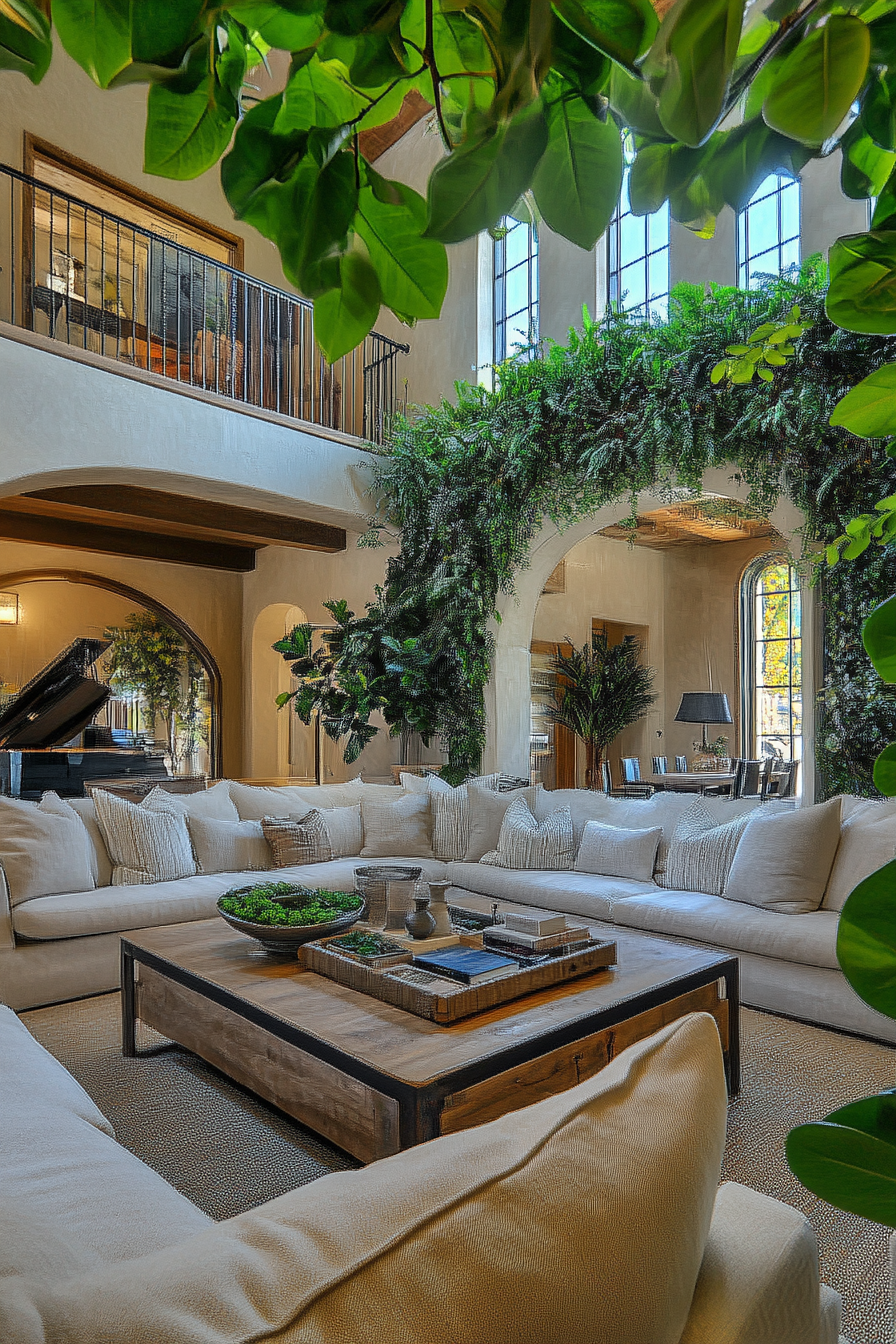
What better way to tap into Japandi’s connection with nature than surrounding yourself with living plants?
This urban living room feels like an indoor garden sanctuary thanks to lush potted greenery placed throughout.
The wabi-sabi of asymmetry guides the placement, avoiding stiff formal arrangements.
Notice how the varied heights of the planters and floor vases create visual interest.
While you can certainly opt for fiddle leaf figs and monsteras, Japandi style embraces local indigenous plants.
Try pairing tropical favorites like palms and philodendrons with herbs like rosemary and lavender.
Don’t forget to include calming floral aromas like jasmine and gardenia.
Your living room will feel like a verdant greenhouse crossed with a meditative Zen garden.
Boho Rattan Furniture
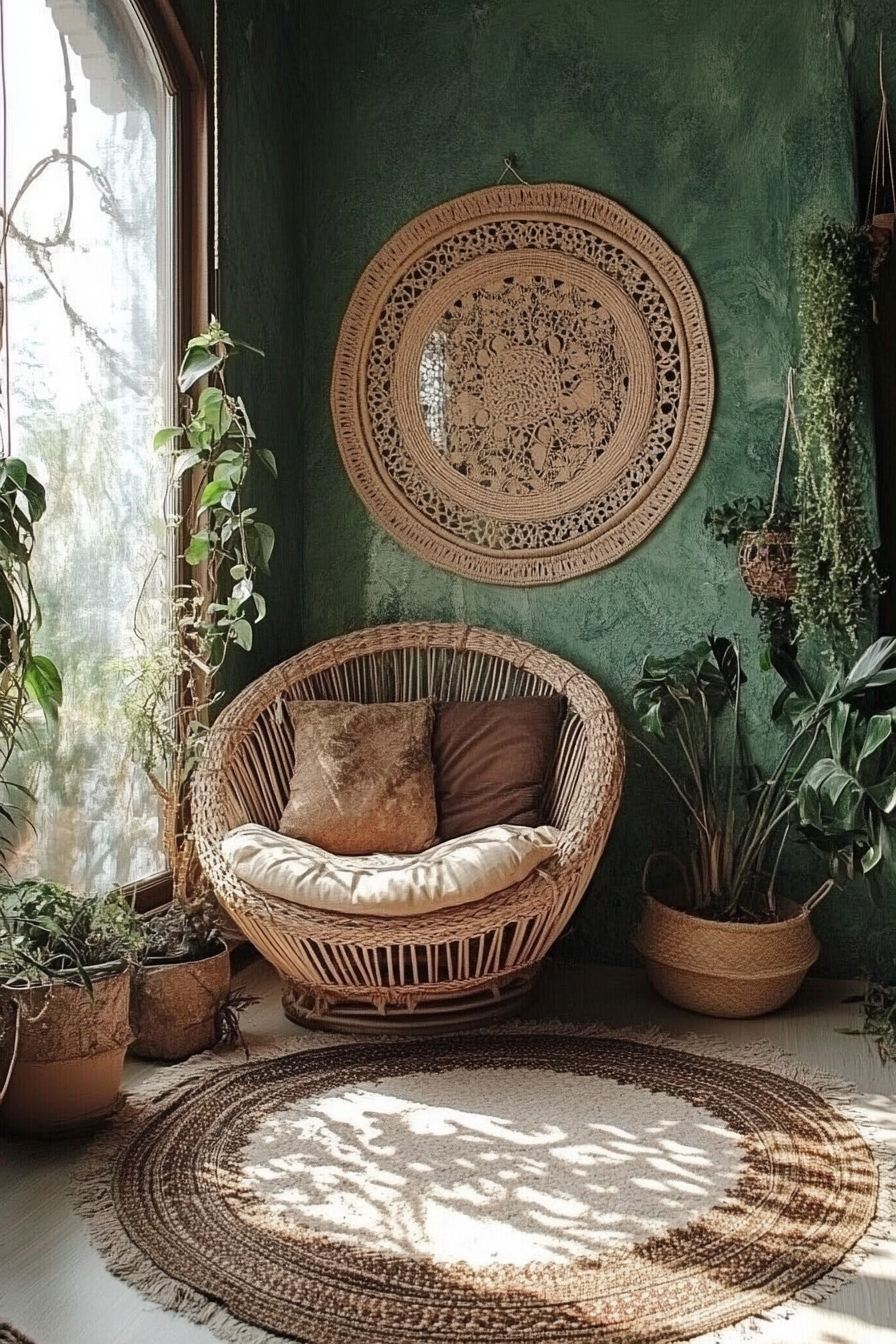
Rattan and cane furnishings instantly impart natural texture perfect for Japandi’s laidback elegance.
This living room lets the curved silhouettes shine against crisp white walls.
Notice how the woven café chairs provide an organic counterpoint to the sleek marble table.
A rattan shelf reiterates the nature-inspired vibe.
The casual boho allure fits beautifully with Japandi’s soothing, uncomplicated appeal.
Search for rattan and cane pieces with minimal ornate detailing to keep things simple.
White-washed frames feel fresh, while woven shades in natural hues add warmth.
Arrange in an asymmetrical cluster and top with cozy linen cushions for an inviting Japandi gathering space.
Modern Concrete Fireplace


The clean lines of a modern concrete fireplace can actually complement a Japandi space beautifully.
The grayish tone and smooth finish work nicely against light wood accent walls.
While concrete may seem stark, the mesmerizing flames create a warmth that draws focus to the fireplace as a dynamic focal point.
Built-in benches continue the grounded, earthy vibe.
The key is balancing the rigid fireplace with soft natural textures.
Layer in a fluffy sheepskin rug, woven pillows and an assortment of green potted plants.
The blend of cool concrete and organic accents makes for a Japandi pairing that’s both modern and grounded.
✨Click to Get My 101 FREE Designer Room Ideas
Midcentury Modern Details
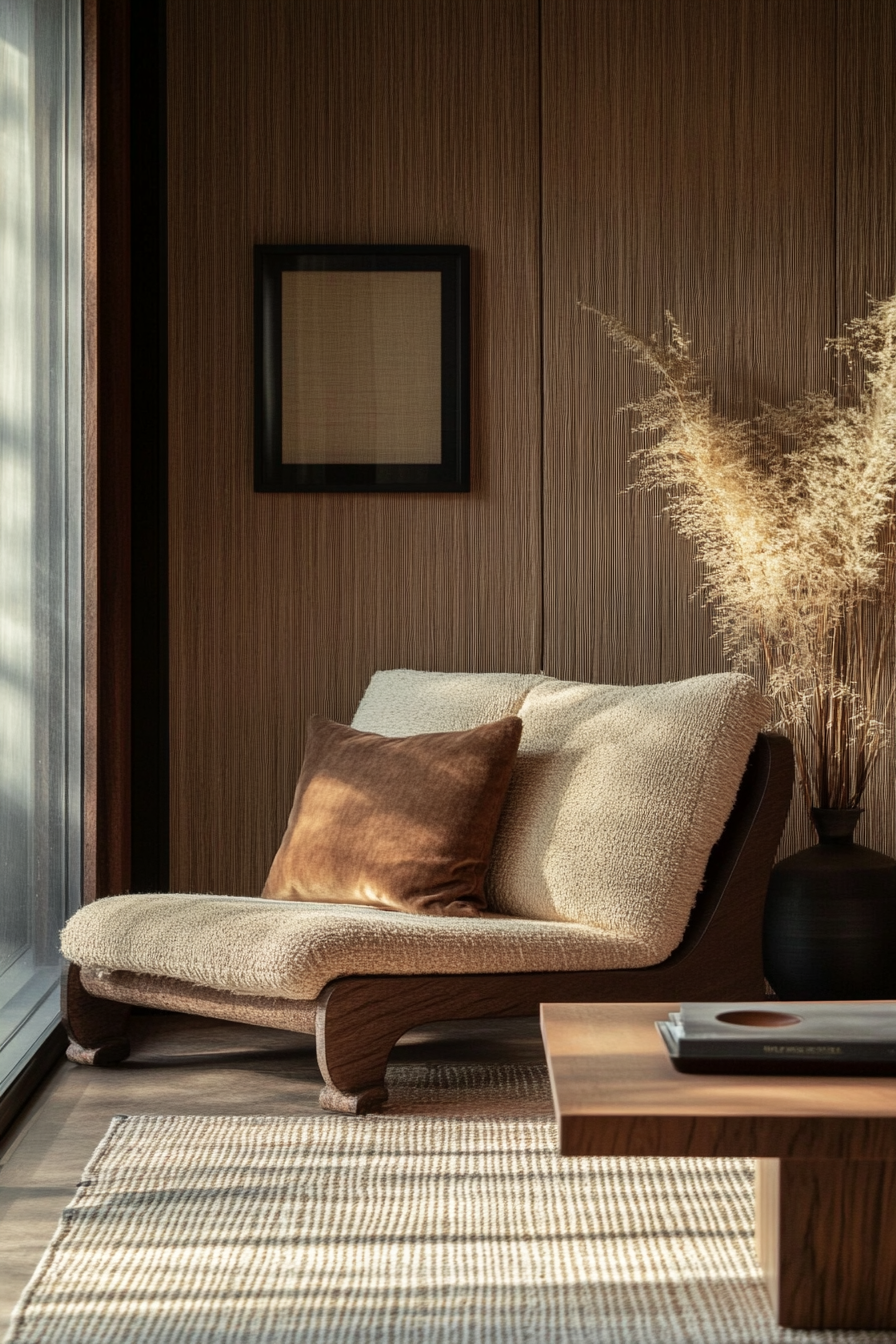
While Japandi skews minimalist, midcentury modern elements can definitely complement the look.
The softly curved shape of this sofa provides a sculptural sensibility, while the splayed tapered legs echo the lines of surrounding greenery.
Wood tones keep the midcentury piece feeling grounded.
Notice how the organic art print and round rattan pendant temper the structured shapes.
Midcentury pieces feel fresh and unintimidating, while the emphasis on functionality and nature fits Japandi’s zen philosophy.
Searches for mix-and-match finds from thrift stores to add character.
Just be sure to anchor with neutral textiles and easy-living greenery to keep your space feeling tranquil.
Japandi style strikes the perfect balance between cozy and minimalist.
These living rooms demonstrate how just a few thoughtful details can create an airy, uncluttered space that still feels warm and welcoming.
Natural materials, soft textures, muted neutrals and abundant plants are key.
Arrange furnishings and accents asymmetrically instead of symmetrically to embrace wabi-sabi’s beauty of imperfection.
Creating tranquility and serenity are the ultimate goals.
Integrate Japanese and Scandinavian principals by paring down decor while inviting in nature.
Your living room will feel like a minimalist retreat that nurtures the spirit.
Japandi’s quiet grace notes will bring everyday mindfulness home.

